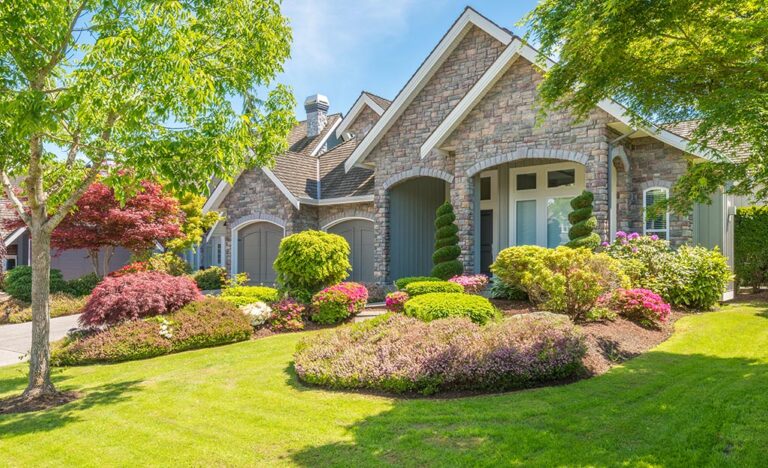When it comes to backyard landscaping, many homeowners focus on lawns, trees, or patios. But bushes—also known as shrubs—are the unsung heroes of a well-designed outdoor space. Landscaping with bushes can define garden beds, frame pathways, create natural privacy screens, and offer year-round beauty.
Whether you’re starting fresh or revitalizing an existing yard, this guide will walk you through everything you need to know about landscaping bushes in your backyard—from choosing the right types to design tips and maintenance advice.
1. Why Use Bushes in Backyard Landscaping?
Bushes provide versatility in both form and function. Here’s why they’re a great choice for backyard landscaping:
- Visual Structure: Bushes offer form and balance, anchoring flower beds and defining spaces.
- Privacy and Screening: Tall or dense shrubs can act as living fences to block views and create seclusion.
- Low Maintenance: Many bushes are hardy, drought-resistant, and require minimal upkeep.
- Seasonal Interest: Certain bushes bloom in spring, change colors in fall, or keep their foliage all year.
- Wildlife Habitat: Bushes attract pollinators and provide shelter for birds and small animals.
2. Choosing the Right Bushes for Your Yard
Selecting the right shrubs is crucial for a successful landscape design. Consider your region’s climate, soil conditions, sunlight exposure, and the overall look you want to achieve.
Here are a few popular options:
Evergreen Bushes
- Boxwood: Compact, easily shaped, and ideal for borders or formal hedges.
- Arborvitae: Tall, columnar, and excellent for privacy screening.
- Holly: Offers glossy leaves and red berries for winter interest.
Flowering Bushes
- Hydrangea: Large, showy blooms in pink, blue, or white; great for garden beds.
- Rhododendron: Thrives in partial shade and adds vibrant spring color.
- Spirea: Small, low-maintenance bushes with pink or white flowers.
Foliage-Focused Bushes
- Barberry: Colorful leaves and thorny branches—great for deterrent hedging.
- Ninebark: Textured bark and dramatic foliage shades of purple or gold.
- Smoke Bush: Adds flair with its wispy, smoke-like flower plumes and colorful leaves.
Make sure to mix evergreen and deciduous bushes to maintain visual interest year-round.
3. Planning Bush Placement and Layout
The placement of bushes should complement the rest of your landscaping and serve specific purposes. Here are a few planning tips:
- Layering: Place taller bushes in the back and smaller ones in front for a tiered, garden-bed look.
- Framing: Use bushes to frame focal points like patios, pergolas, or garden features.
- Pathway Borders: Low-growing shrubs like boxwood or lavender can define walkways or edge garden beds.
- Privacy Screens: Plant bushy varieties close together along fences or property lines for a living wall.
- Foundation Plantings: Use neat, compact shrubs around the base of your home for a polished look.
Be sure to consider each bush’s mature size and spacing requirements to prevent overcrowding.
4. How to Plant Backyard Bushes Properly
Follow these steps to ensure your bushes grow healthy and strong:
- Choose the Right Season: Early spring or fall is ideal for planting bushes, when temperatures are mild and rainfall is more abundant.
- Prepare the Site: Clear weeds and loosen the soil. Add compost if needed to enrich the soil.
- Dig the Hole: Make the hole twice as wide as the root ball but no deeper than the root ball’s height.
- Position the Bush: Set the bush in the hole so the top of the root ball is level with the ground.
- Backfill and Water: Refill the hole with soil, gently tamping down. Water deeply to help settle the soil.
- Mulch: Apply a 2–3 inch layer of mulch around the base, but keep it a few inches away from the stem.
5. Design Tips for Landscaping with Bushes
Here are some expert tips to elevate your backyard with bushes:
- Group in Odd Numbers: Plant bushes in groups of 3 or 5 for a more natural, pleasing look.
- Vary Heights and Textures: Use a mix of shrub sizes and leaf textures to create depth and contrast.
- Add Color: Include flowering and foliage-color bushes to brighten up dull spaces.
- Balance Symmetry and Flow: Combine formal (symmetrical) plantings near structures with informal groupings elsewhere in the yard.
- Combine with Other Elements: Blend bushes with trees, flowers, hardscape, and lighting for a cohesive design.
6. Maintenance and Pruning Tips
Proper care keeps your backyard bushes healthy and attractive year after year.
- Watering: Newly planted bushes need consistent watering. Once established, many require less frequent irrigation.
- Mulching: Reapply mulch each spring to retain moisture and suppress weeds.
- Fertilizing: Use a balanced fertilizer in spring to promote healthy growth.
- Pruning:
- Remove dead or diseased branches anytime.
- Prune flowering shrubs right after blooming.
- Shape hedges in late spring or early summer.
Also, keep an eye out for common pests like aphids, spider mites, and powdery mildew, and treat them promptly with natural or chemical controls.
Final Thoughts
Landscaping near me in your backyard with bushes is an excellent way to add structure, color, and function to your outdoor space. With the right planning, proper planting, and regular care, your bushes can provide beauty and enjoyment for years to come.
Whether you’re creating privacy, framing your garden, or simply adding a burst of color, bushes are a foundational element of any backyard landscape. Take the time to choose wisely, plant correctly, and maintain consistently—and your yard will be the envy of the neighborhood.


